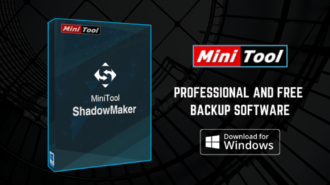The Ultimate HIPAA Compliance Checklist
- 1 Checklist for HIPAA Compliance: Eight Steps to Compliance
- 1.1 Comprehend HIPAA’s Three Requirements
- 1.2 Find Out Which Laws Apply to Your Business
- 1.3 Determine Which Data Requires Enhanced Security
- 1.4 Conduct a Risk Analysis
- 1.5 Incorporate Accountability into Your Compliance Plan
- 1.6 Limit Violations by Closing Gaps
- 1.7 Maintain Detailed Documentation
- 1.8 Immediately Report Security Incidents
- 2 Conclusion
Compliance checklists assist enterprises in meeting HIPAA obligations and ensuring compliance with the act. Understanding the HIPAA compliance duties of business partners can also be critical for enterprises. Understanding your own and your company partners’ compliance duties might be crucial. This is because ignorance of HIPAA standards is not a valid defense against HIPAA enforcement actions. Compliance with a corrective measure will entail indirect expenses and interrupt corporate operations, even though most enforcement proceedings do not end in civil financial penalties.
Checklist for HIPAA Compliance: Eight Steps to Compliance
Mishandling patients’ protected health information (PHI) can have severe repercussions for the client and the company that exposed their sensitive data. Criminal or civil HIPAA violations are one consequence for firms that purposefully or inadvertently reveal patient PHI. HIPAA non-compliance may be exceedingly costly for organizations. This HIPAA compliance checklist can assist you in obtaining and keeping HIPAA compliance, especially with HIPAA compliance software.
Comprehend HIPAA’s Three Requirements
To implement controls for HIPAA compliance, you must comprehend the Privacy, Security, and Breach Notification Rule. Organizations must comply with the Privacy Rule and Security Rules to safeguard PHI and ePHI. In the case of a security breach, a company must implement corrective measures. Security measures, protocols, and guidelines should be designed with the desired outcome in mind.
Find Out Which Laws Apply to Your Business
Determine whether your organization counts as a covered entity as a first step. Entities subject to the Privacy Rule will be accountable for installing controls to secure all PHI, not only electronic data. Even if your organization is an exemption entity or business partner, you may still be subject to specific Privacy Rule requirements if you retain contracts with covered businesses.
Determine Which Data Requires Enhanced Security
HIPAA standards require the protection of personally identifiable health information, but not all of an organization’s data. Identify the data your firm collects, utilizes, and stores on paper and in your IT system.
Conduct a Risk Analysis
Finding the loopholes in your compliant data security policies will allow you to achieve HIPAA compliance. Using OCR’s Security Risk Assessment Tool, assess how well your present measures match the HIPAA Security Rule. The HIPAA guidelines outline security and safety guidelines and policies. Examine yours! PHI must be safeguarded during use, storage, and transmission.
Incorporate Accountability into Your Compliance Plan
Once you have determined what your business must do to achieve compliance, define who is responsible for which aspects of your compliance program to facilitate efficient, transparent communication. Compliance with HIPAA necessitates routine monitoring, audits, technical maintenance, and training. Establishing the relevant parties for these steps early on can aid businesses in maintaining HIPAA compliance.
Limit Violations by Closing Gaps
Once you have developed a strategy for implementing and managing compliance, your attention should turn to implementing the safety and privacy measures that will reduce risk the most. Develop a HIPAA compliance checklist to evaluate your progress and identify any remaining gaps.
Maintain Detailed Documentation
Document everything carefully as you work to bring your data security and safety up to HIPAA standards. This can involve storing updated versions of your rules and procedures, noting who participated in compliance training, and documenting the entities with whom you communicate protected health information.
Immediately Report Security Incidents
If your company has a security breach, you must notify the Secretary of Health and Human Services within two months of finding the occurrence. The organization should also inform all affected persons within the same time frame as the breach. You must notify local media if the breach impacts more than 500 individuals.
Conclusion
After completing the HIPAA compliance checklist, if you find more items to be unchecked than to be checked, don’t worry. HIPAA compliance can be complex, but firms like Secureframe can help ease stress and simplify the process. HIPAA compliance is an ongoing activity, not a one-time occurrence. It’s challenging to change a culture of non-compliance. Therefore, it’s critical to have safeguards in place to prevent shortcuts from becoming commonplace.


















